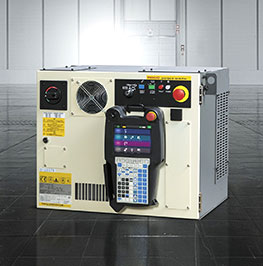

Νοέ . 10, 2024 05:40 Back to list
How to Build an Eddy Current Separator
Eddy current separators are essential tools in recycling facilities, helping to segregate non-ferrous metals from other materials. Utilizing the principle of electromagnetic induction, these machines are highly effective for recovering aluminum, copper, and other non-ferrous metals from a range of materials, including mixed plastics and municipal solid waste. In this article, we will guide you through the essential steps to build your own eddy current separator.
Understanding the Principle of Eddy Currents
Before diving into construction, it’s important to grasp how eddy current separators function. When a non-ferrous metal passes through a magnetic field, it induces circulating currents (eddy currents) within the metal. These eddy currents create their own magnetic fields, which interact with the original magnetic field and cause the metal to be repelled. This repulsion allows for the separation of metals from other materials.
Materials Required
To build an eddy current separator, you’ll need the following materials
1. Magnetic Rotor A high-strength magnetic rotor is crucial. Neodymium magnets or ferrite magnets can be used to generate a strong and uniform magnetic field. 2. Conveyor Belt A durable conveyor belt will transport materials through the magnetic field. The belt should be made of non-metallic materials.
3. Frame A sturdy frame to support the rotor and conveyor. This can be made from steel or aluminum for durability.
4. Power Supply A suitable power supply to drive the conveyor system and any additional equipment like vibrators or feeders.
5. Control System A control system to monitor and adjust the speed of the conveyor belt and the magnetic field strength.
6. Chutes and Collection Bins To collect the separated metals and non-metals for further processing.
Step-by-Step Guide to Building the Eddy Current Separator
Step 1 Design the Layout
Begin by designing the layout of your eddy current separator. Determine the dimensions based on the expected throughput and the types of materials being processed. Include the positioning of the conveyor belt, the magnetic rotor, and the chutes for collecting separated materials.
Step 2 Construct the Frame
Using your chosen materials, build a sturdy frame to support the conveyor and rotor. Ensure it is stable enough to handle the vibrations of the machinery and heavy materials to be processed.
Step 3 Install the Conveyor Belt

Attach the conveyor belt to the frame. Ensure it runs smoothly and is aligned properly to avoid material spillage. The belt should have an adjustable tension mechanism for maintenance purposes.
Step 4 Position the Magnetic Rotor
Mount the magnetic rotor above the conveyor belt. The rotor should be centered to ensure an even magnetic field across the belt width. Proper distance between the rotor and belt is crucial; typically, a few inches will suffice.
Step 5 Connect the Power Supply
Integrate a power supply to operate the conveyor belt. Make sure the motor driving the belt can handle the anticipated load and is adjustable for speed control.
Step 6 Set Up Control Systems
Install a control system to manage the operation of the conveyor and rotor. This system should allow you to monitor the speed and adjust parameters as needed for optimal performance.
Step 7 Add Collection Chutes and Bins
Install chutes at the end of the conveyor to direct the separated materials into collection bins. Ensure the design minimizes the risk of contamination between the separated products.
Step 8 Testing and Calibration
Once the assembly is complete, conduct tests to ensure everything operates correctly. Run various materials through the system to calibrate the speed and strength of the magnetic field for optimal separation efficiency. Make adjustments as necessary to improve performance.
Maintenance and Safety
Regular maintenance of your eddy current separator is vital for ensuring efficient operation. This includes cleaning the conveyor belt, checking mechanical parts for wear, and ensuring the magnetic rotor remains free of obstructions.
Safety should also be a priority. Implement safety guards and emergency stop functions to prevent accidents during operation. Always wear appropriate safety gear when operating heavy machinery.
Conclusion
Building an eddy current separator can be a rewarding project for anyone interested in recycling or metal recovery. By following these steps, you can create an effective machine that contributes to resource recovery and waste reduction, ultimately promoting a more sustainable environment. Always remember to prioritize safety and efficiency in your design and operation.
Latest news
Troubleshooting Common Eddy Separator Problems
NewsJul.04,2025
The Role of Metal Recycling Plants in Circular Economy
NewsJul.04,2025
The Impact of Recycling Line Pickers on Waste Management Costs
NewsJul.04,2025
Safety Features Every Metal Shredder Should Have
NewsJul.04,2025
How Industrial Shredders Improve Waste Management Systems
NewsJul.04,2025
How Cable Granulators Contribute to Sustainable Recycling
NewsJul.04,2025